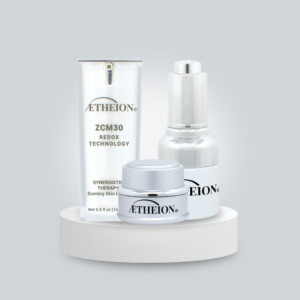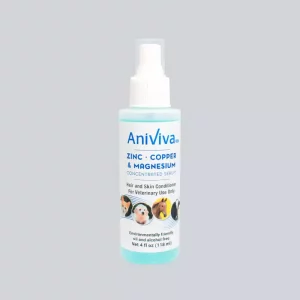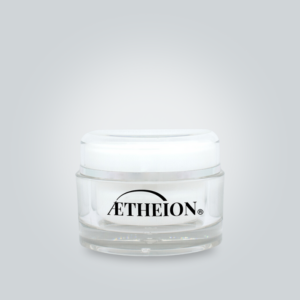No products in the cart.
Chemical Peels: 10 Incredible Benefits, Risks, and Aftercare
Table of Contents
Welcome to the world of chemical peels - a breakthrough treatment strategy that has revolutionized the field of skincare. Whether you're grappling with fine lines, acne scars, sun damage, or uneven skin tone, chemical peels can offer a targeted solution and remarkable results!
What is a chemical peel?
A chemical peel is a skin-resurfacing procedure that uses a solution of various chemicals applied to the skin, which eventually "peels off." In essence, a chemical peel is a means of exfoliating or producing controlled skin damage to the outer layers of the skin.
The regrowth of the skin can result in a smoother, less wrinkled, and more youthful appearance.
There are several benefits to this treatment. For one, it can reduce the appearance of fine lines and wrinkles, improve skin texture and tone, and reduce discoloration caused by sun damage.
Moreover, it can treat certain types of acne, decrease the visibility of scarring, and remove precancerous skin growth. Hence, chemical peels are popular for those seeking to improve their skin's appearance.
Types of Chemical Peels and how they work

There are three main types of chemical peels: superficial, medium, and deep.
Light Peels: They use mild acids like alpha-hydroxy acid, also known as superficial peels. They gently exfoliate the outermost layer of the skin, addressing issues like mild discoloration and rough skin.
Medium Peels: These peels use a more vital acid, like trichloroacetic or glycolic acid, penetrating the outer and middle layers of the skin. They are effective against age spots, wrinkles, and moderate skin discoloration.
Deep Peels: The most intensive of the three deep peels use phenol to penetrate the middle layer of the skin deeply. They are used to treat severe wrinkles, sun damage, and scars.
Each type of chemical peel works by causing the top layers of cells to dry up and peel off over days. As the treated skin comes off, the new skin underneath is often smoother, less wrinkled, and more even in color. It is essential to note that the results and recovery time vary based on the intensity of the peel.
Find a qualified dermatologist or aesthetician to administer the procedure
Selecting the right professional to administer a chemical peel is paramount to achieving the desired results and ensuring your safety.
A qualified dermatologist or aesthetician understands skin types and conditions, chemical peel solutions, and the appropriate post-treatment care. They can accurately evaluate your skin and recommend the most suitable peel type based on your skin condition, concerns, and objectives.
Furthermore, they have the expertise to handle the procedure correctly and respond effectively to any possible complications. Therefore, always ensure that your chosen professional is certified and has a good track record of successful treatments. This step is crucial in enhancing your comfort, confidence, and satisfaction with the treatment outcome.
What to Expect During a Chemical Peel Treatment
During the treatment, you may experience a tingling or burning sensation as the chemical solution is applied, but this should subside quickly. Afterward, your skin will start to peel, which can last anywhere from a few days to a couple of weeks depending on the depth of the peel.
The procedure lasts between 15 to 30 minutes, based on the intensity of the peel. Post-procedure, the skin may appear red or slightly swollen, like a mild sunburn. This will gradually diminish as the skin peels over the next few days.
Before and After Chemical Peels

Before getting a chemical peel, it is essential to prepare your skin to ensure the treatment is effective and safe. It includes cleansing your skin thoroughly and avoiding harsh skincare products or therapies that might irritate your skin, such as retinol, waxing, or laser treatments.
Minimize sun exposure as it can increase the risk of uneven skin tone post-peel. Some dermatologists recommend using a lightening agent and a retinoid cream before the treatment, especially for deep peels, to enhance the results and lessen the chances of skin discoloration.
After the treatment, the skin will be sensitive and require special care to support the healing process and maintain the results. It includes staying out of the sun as much as possible and using a broad-spectrum sunscreen of at least SPF 30 when you go out—avoiding strenuous activities that may cause sweating and hot showers or saunas that can increase blood circulation to the face and cause the skin to blister or swell.
It is also crucial to keep the skin moisturized and avoid picking or peeling off it, which can lead to scarring. Lastly, avoid using makeup and harsh skincare products until your skin has fully healed. Always follow the specific post-care instructions given by your skin care professional to ensure the safety and effectiveness of the treatment.
Alternative Treatments for Skincare Concerns
While chemical peels are beneficial for many, there are also alternative skin treatments that individuals can explore based on their unique skin concerns and preferences:
Microdermabrasion: This procedure uses a unique applicator with an abrasive surface to gently sand away the thick outer layer of the skin, rejuvenating it. It can improve the appearance of sun damage, wrinkles, fine lines, age spots, and other skin-related concerns and conditions.
Laser Skin Resurfacing: This treatment uses concentrated light beams to reduce facial wrinkles, skin irregularities, and scars. This procedure commonly uses two types of lasers: ablative and non-ablative. Ablative lasers include CO2 or erbium, which remove thin layers of skin, while non-ablative lasers stimulate collagen growth and tighten the skin beneath.
Dermarolling or Microneedling: This treatment involves rolling a small device covered in high-grade medical stainless steel needles over the skin to rejuvenate it. This process stimulates the body's natural healing response, triggering collagen and elastin production.
Facial Treatments: These include a variety of treatments, such as classic facials, hydrating facials, anti-aging facials, and more. Each is designed to address specific skin concerns and can be customized to suit different skin types.
Topical Treatments include retinoids, vitamin C serums, and alpha or beta hydroxy acid formulations. These treatments can help to improve the skin's texture, reduce fine lines, and lighten dark spots.
In conclusion, chemical peels offer a promising route to achieving revitalized, youthfully radiant skin. It's crucial to ensure you're embarking on this skincare journey with the correct information and the right professionals by your side.
For those seeking an alternative or supplementary solution, we invite you to explore the AETHEION Cosmetic System products. These offerings cater to various skin types and concerns, enhancing your skin health and beauty regimen. Discover the difference today and chart your path towards healthier, more vibrant skin.

Copyright © 2024 All Rights Reserved, AETHEION® cosmetics store is property of ChemCream S.A.P.I. de C.V.




